Sandra Gregson
All images copyright by Sandra Gregson (photo credit: Jessica Thalmann) | 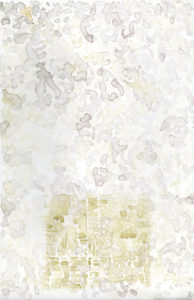 | 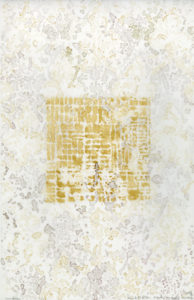 |
(Left) Stain, 2020, Ink made from maple leaves, red oxide on mylar. (Centre) Reside, 2020. Inks made from buckthorn berries, oak and maple leaves on mylar. (Right) Breach, 2019. Inks made from buckthorn berries, oak and maple leaves on mylar.
The word garden is derived from the old English word, ghordos, meaning enclosure. In cities, a garden is often the small area of land in front of a building.
For about two decades I lived near High Park, a large park of about 161 hectares, in Toronto. It was about an eight-minute walk to the park along residential streets, and I passed many tended gardens on my way there. Before High Park was ‘owned’ by John Howard (who later gifted it to Toronto), it was mostly forested land that had been inhabited and traveled by Indigenous people for thousands of years. John Howard built his home Colbourne Lodge at the south end of the park and kept a flower garden in the front and a vegetable garden at the rear.

Populate, 2019. Inks made from wild grapes, oak and maple leaves on mylar.
For several years I was a volunteer steward in High Park and participated in removing invasive plant species such as common buckthorn and Himalaya balsam, as well, collected seeds and planted native species of plants.
I became interested in plant knowing and land memory and how, although ordered by gridded streets and divided into lots where houses were built and gardens planted, remnants of pre-colonial settlement persisted, for example, in trails, landforms and plants, such as oak trees, ferns, wild grapes.
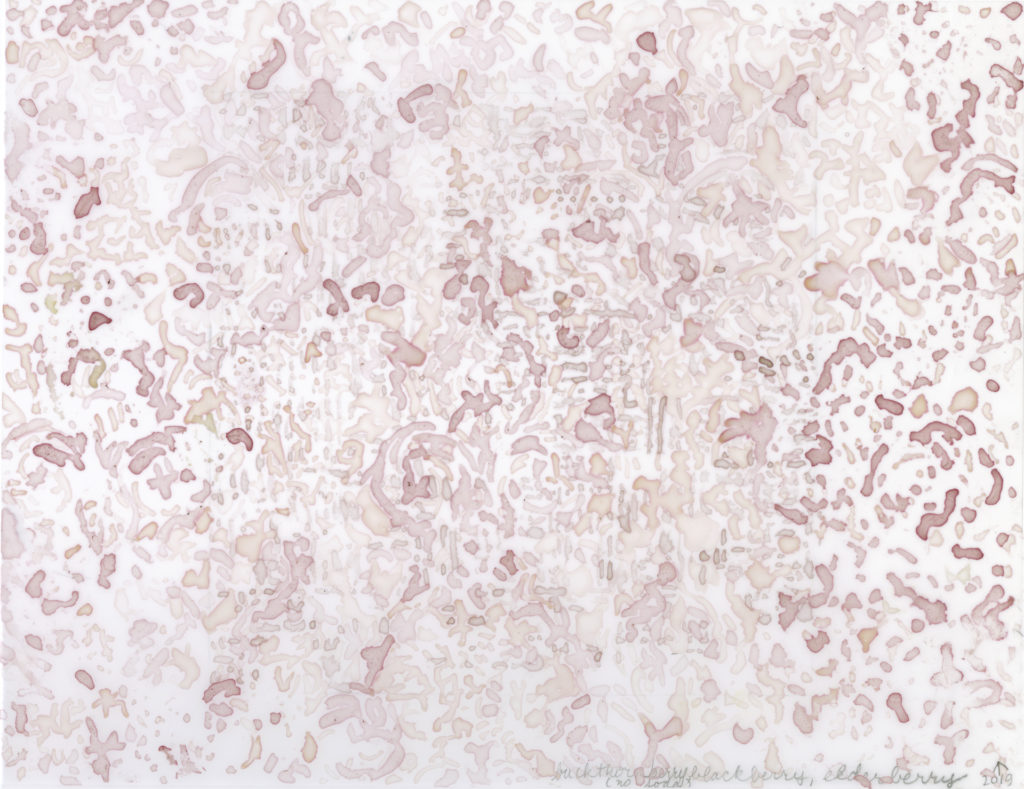
Fashion, 2019. Inks made from buckthorn berries, black berries and elderberries on mylar.
In my series of drawings, Indelible, many of the drawings are structured so that there is a square inset within a rectangle or larger square. This structure references land division and also the imposed boundary between natural and cultivated land. Other drawings have an overlay of a map and wallpaper pattern.
The maps and wallpaper patterns are used to explore concepts of nature and separation between the natural and cultivated. The patterns in the drawings are based on floral-based wallpapers from Colbourne Lodge and portray nature as decorative. The maps overlaid in the drawings are from the streets east of High Park and from an area roughly the same size as the park. Before settlement, this area was, like High Park, primarily forested.

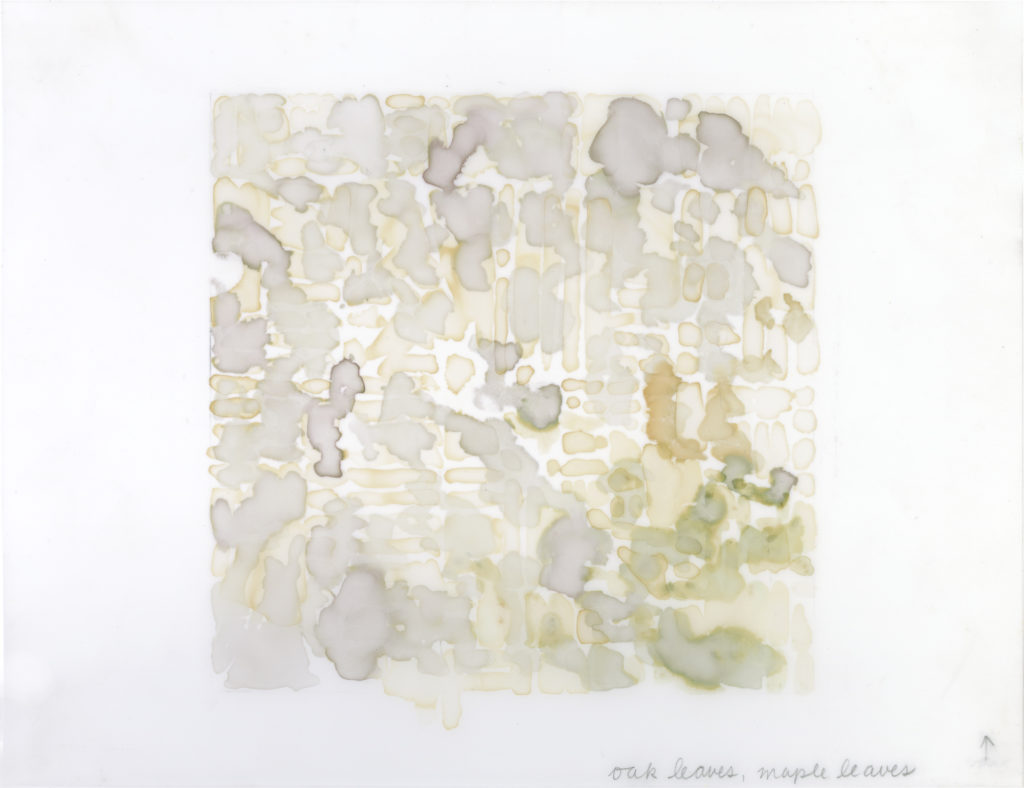
The drawings are done using inks I made from collecting plant materials on my walks in and around High Park. Some inks are made from native species, such as oak, maple, wild grape and impart a deep memory of cyclic change and history of the land before it was mapped and divided. Other inks are made from non-native species, such as common buckthorn which was introduced by Europeans as an ornamental shrub and has become invasive in High Park.
The drawings explore plant memory, concepts of the natural world, and the history and separation between natural and cultivated. Within the drawings, like in a garden, the boundary between natural and cultivated realms becomes entangled.
 |
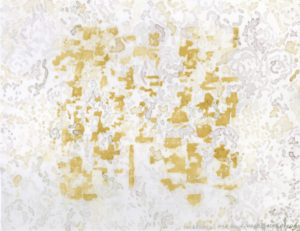 |
(Left) Occupy, 2019. Inks made from elderberries, maple leaves, and buckthorn berries on mylar. (Right) Squat, 2019. Inks made from elderberries, buckthorn berries, oak and maple leaves on mylar.

Conform, 2019. Inks made from burnt oak, oak and maple leaves on mylar.
Ottawa-based artist Sandra Gregson makes drawings, paintings, and sculptures. Her current areas of research include plant knowing and the changing relationships between natural and built environments. She currently volunteers at the Fletcher Wildlife Garden in Ottawa. Sandra holds an MFA from York University and a BFA from Nova Scotia College of Art and Design. Her work has been exhibited in artist-run, public and private galleries across Canada; she is represented by Sivarulrasa Gallery.